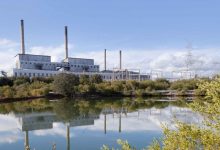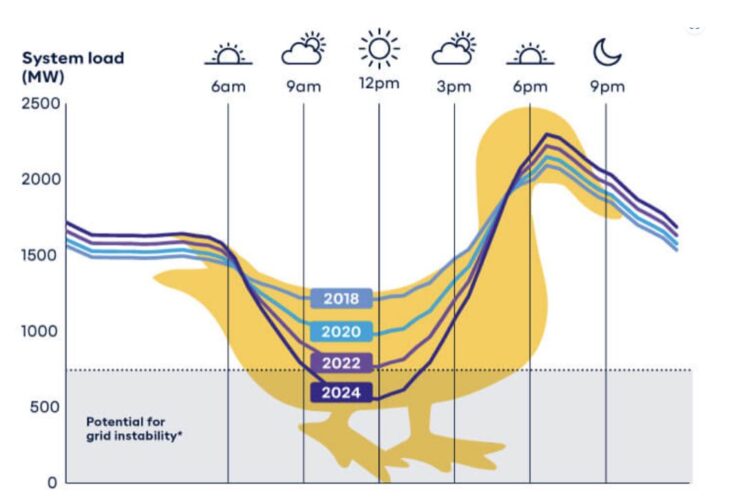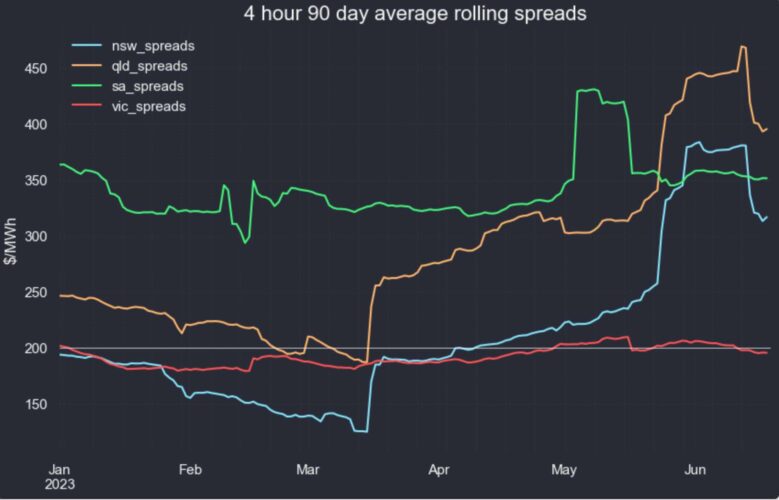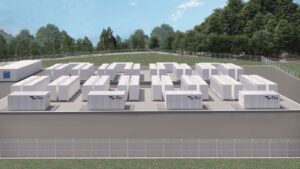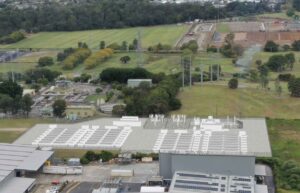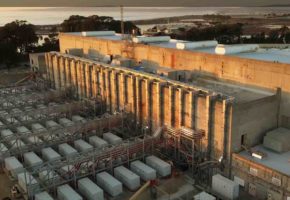It is less than five years since the Collie shire council, in the heart of Western Australia’s coal country, voted overwhelmingly against a proposal to install rooftop solar on council buildings.
The council had been told it could save nearly half a million dollars by installing rooftop solar and in so doing avoid a planned rise in council rates. But the councillors were more interested in preserving the past.
“(We) should be leading the way and burning more coal,” said John Piavanini, a councillor who led the debate against the rooftop PV, and who – as head of the Vintage Tractor and Machinery Association and Collie Veteran Car Club – clearly had a soft spot for old technology.
The past, present and the future have finally caught up with Collie, where the last of the state-owned coal fired power stations will be shut down in five years time, under an edict by the state government, and where the privately owned ones are going broke.
But there is also hope for that future – as the town is poised to become host to two of the country’s, and the world’s, biggest battery storage projects.
The state government and its wholly owned utility Synergy stunned the energy world last month with plans to build by 2025 a 500MW, four hour battery near the soon to be closed Collie power station. This week it casually announced another 2,000MWh battery to be built not far away by 2029.
Also this week, French renewable energy developer Neoen went one better, unveiling plans for its first four-hour battery anywhere in the world. The first stage of its Collie battery has begun construction and will be sized at 867MWh, but the project has approval to reach 4,000MWh.

Like the Hazelwood battery that was officially opened last week – becoming the first to be completed at the site of a former coal generator – the new Collie battery announced by Neoen is a landmark moment for the battery storage industry.
Tesla is providing its Megapack battery modules for the project, which will have a two year contract to address a specific problem in the local grid – the growth of the “solar duck” curve and the problems it creates for the people managing the grid.
“This is an important project for the SWIS, as it allows batteries to now participate in the established capacity market (RCM), as well as crucial ancillary service markets,” Josef Tadich, the head of Tesla Energy in Australia, wrote on LinkedIn this week.
“Increasing the duration of storage to 4 hours is important for energy markets, and is in line with global trends, competing with traditional gas-fired peakers,” he wrote, before noting that battery storage has a lot more in its skill-set than fossil fuel generators because they can deal with a new problem that has emerged on the grid – putting a floor under minimum demand and dealing with the so-called “solar duck”.
This is completely different from the challenge of meeting “maximum” demand that the grid was largely designed around. The proliferation of rooftop solar has turned the operation and the management of the grid upside down, and battery storage is one of the key solutions.
“Unlike a gas-fired peaker, on the load side (battery storage) helps with the minimum generation issue that a lot of grids are experiencing, soaking up abundant renewables and allowing further renewable penetration.
“In the sun-drenched SWIS, this will be increasingly important to soak up day-time solar whilst maintaining system security.”
Tesla – mostly with Neoen – has been involved in most of the ground-breaking battery storage projects built to date in Australia.
It built, of course, the “Tesla big battery” – aka the Hornsdale Power Reserve – in less than 100 days to become the biggest battery in the world. It upgraded and expanded that battery to offer, for the first time, grid forming inverters that will provide a critical component of a 100 per cent renewable grid.
It has also built the biggest battery in Australia to date – the 300MW/450MWh Victoria Big Battery – that acts as a sort of giant shock absorber to allow maximum transfers at peak times between Victoria and NSW.
The Collie battery takes battery storage into yet more new territory. There has been talk of four hour batteries for some time, but this will be the first to be built at scale in Australia.
Other big battery projects are starting off with just one hour of storage, so they can focus on grid services. The Collie battery will be the first to do bulk shifting of rooftop solar from the middle of the day to the evening.
That means it will be the first to do what many – without the detailed understanding of the myriad tricks in its tool kit – imagined that batteries were designed to do
One of the reasons this is happening is the acceleration of the exit of coal, and the increasing volatility on electricity markets. Storage products – be they pumped hydro or batteries – need volatility to make money.
They want to charge at low prices – or even be paid for it – and then sell in the pricier evening peaks.
ITK analyst David Leitch says that storage needs a “spread” – the difference between high and low prices” to average around $200/MWh to make the case for “arbitrage” – where batteries and pumped hydro make their money.
That’s what is visible in the market today, with the “spread” in many states well above that level. This, and the growing need for battery storage as a “fill” for the grid as new transmission projects get delayed, explains the rush of new project in recent months.
“What we’re seeing is a technically proven technology coming together with multiple use cases,” says Daniel Burrows, the head of Macquarie Group’s battery offshoot Eku Energy, which helped deliver the Hazelwood battery.
At the Australian Energy Week conference in Melbourne this week, Burrows outlined some of the multiple use cases for battery storage.
“The first is storing energy when it’s abundant, and making it available when we need it. So that’s the time shifting of energy and I think that one will be pretty well understood here,” he said.
“The other services that energy storage provided those valuable network services to keep our grid operating safely and reliably.
“But one of the benefits of there’s lesser talked about the the network services contracts. In a network it can provide specific services at a specific location, and it can give governments and network operators more time to make a decision on what infilling transmission or distribution might be required.
“Now to be clear, I’m absolutely not saying that the transmission build is not required. But what I’m talking about here is the infilling of transmission.
“As we think about the electrification of everything, where does demand and where does load go, buying people more time to make sure that those investments are driving prices down and not up as they are made.
“The fourth point I have …. is that energy storage has valuable physical capacity in the system. What it also allows us to do is create risk management tools, and their risk management tools that are available to different market participants to again accelerate the energy transition.”
And because existing coal and gas generators have well established infrastructure, that’s where most of the really big batteries are going to be built – at Collie, Hazelwood, Kwinana, Eraring, Loy Yang, Torrens Island, Liddell, Eraring, Mt Piper, Kogan Creek, Tarong and Stanwell.
That’s important for the communities at the major fossil fuel generation centres that are worried about being disenfranchised and defenestrated by the shift to wind and solar.
Sarah Stanley is the Collie shire president. She was one of two councillors who voted for rooftop solar back in 2018, but was outvoted. She is now more than happy to be able to embrace the future, for the town and its community, in their own back yard.
“We are very proud to continue our long history of powering the state,” she said after the Neoen battery announcement.
“Renewable energy infrastructure, such as Neoen’s big battery, is a key factor in the attraction of new, innovative and sustainable industries that will cement Collie’s place as an important industrial hub, providing worthwhile employment opportunities for generations to come.”
See also RenewEconomy’s: Big Battery Storage Map of Australia
Big batteries storm fossil fuel citadels, and spell the end for coal and gas
Batteries are a good replacement for coal:” Utility unveils another 2,000MWh big battery
Neoen and Tesla to build giant four-hour battery in landmark deal to squash solar duck

